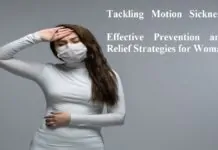The coronavirus has dominated the newsrooms, the internet and has brought all activities in the world at a halt. Besides causing havoc and instilling fear across the world population it’s sending many to an early grave. In fact, it has literally humbled the global economy with giant countries like the United States, China, Italy just to mention but a few pressed on the wall. While you may have heard the term coronavirus and quarantine a million times, you may still not have `understood everything about this virus and this whole thing of self-quarantine. If so, we will focus on this in a minute.
Table of Contents
What is CoronaVirus?
Coronaviruses are a group of viruses. Some of these viruses are transmitted from one person to the other like the newly found COVID-19. This virus causes respiratory illness. It started from China in Wuhan towards the end of 2019. The Chinese tried to treat the disease without raising alarm until the situation could not be contained any longer.
The virus was spreading so fast across Wuhan and this caused panic across the world. Nevertheless, its exact source has not been established. In just a few months, the coronavirus has killed over 20,000 people and infected hundreds of people across the world. The figures keep increasing daily and the situation worsens each day. Coronavirus is an invisible monster that everyone is trying to avoid.
However, the coronavirus does not move but people move it hence the popular ‘stay at home’ slogan. If you remain indoors and keep social distance whenever you are among people, you are on the safe side.
How is CoronaVirus Transmitted?
COVID-19 is spread from people to people via cough or sneeze droplets. Cough or sneeze droplets move as far as 2metres. So, once such droplets come into contact with your mouth, face or eyes, you contract the virus. Unfortunately, you can’t tell if a person is a coronavirus victim just by looking at them because the virus symptoms do not show until after 2 weeks.
The virus is also transmitted through shaking hands with an infected person. This is because they have might have sneezed on their hands. Once you shake hands with them, the virus remains on your hands and you may later touch your face hence contract the disease. Note, you can get the Coronavirus if you come into contact with surfaces that has the virus.
What are The Symptoms of the Coronavirus?
The World Health Organization has released a lot of information about the new CoronaVirus. Its symptoms are excessive fatigue, dry cough, shortness of breath and loss of taste and smell. Also, you may experience other symptoms such as a running nose, body aches, diarrhea, nasal congestion, and sore throat. Furthermore, you experience high temperatures and continuous cough.
As deadly as the COVID-19 virus may sound, it’s not a death sentence. It’s true, it has lead and still leading to the death of people across the world but the largest numbers of COVID-19 patients are recovering. Most of them only have mild symptoms. Those with severe symptoms are people with underlying health conditions such as Diabetes, High blood pressure, asthma and so on. Some of these patients are getting healed without any treatment.
According to observations made by the doctors, one 1 in 6 patients become critically ill. In most cases, the elderly people are losing the battle with the COVID-19 virus as a result of underlying respiratory conditions, heart diseases, and low immune system.
How to Avoid Getting CoronaVirus
There are precautions to take to avoid being a coronavirus victim. Here is what you have to do;
- Avoid social gatherings; at this point, you should assume that everyone else around you is a coronavirus victim and you are the only exception. So, you should keep your distance until the virus fades away.
- Clean your hands using soap after every 20 minutes; cleaning your hands often kills all the germs and viruses that might be on your hands.
- Use a hand sanitizer; in case, there is no water and soap, an alcohol-based hand sanitizer has what it takes to kill the coronavirus.
- Sneeze or cough on a disposable tissue paper; avoid coughing or sneezing on your handkerchief. This is because if one has the virus and they sneeze on their handkerchief, the virus is left on the handkerchief. So, always use a disposable tissue paper.
- Maintain cleanliness around your house; clean your door handles, the floor and the walls of your house often. Also, avoid piling up your clothes. This is because when your clothes come into contact with the virus, it sticks there for days before it dies. So if you pile up dirty clothes, you may be piling up the coronavirus. So once you get home, take a bath and wash the clothes. If that’s not possible, you can expose them to the sun because the virus may not survive hot sun rays.
- Avoid shaking hands; we have been raised in a society that believes that shaking hands, hugging and kissing is a way of expressing love. The coronavirus has forced us to abandon our beliefs just to stay safe. So, don’t shake hands, no kissing and no hugs (at least for now).
What Should I Do if I Suspect that I have This Virus
At first, one can barely differentiate a common fever from the coronavirus. But if you have symptoms discussed above you should quarantine yourself. Quarantine is a case where you separate yourself from everyone else. You use your personal effects, dishes, and washroom and so on.
However, if this is not possible, the washroom should be disinfected every time after you use it to avoid infecting others. Self-quarantine should take about 14 days but if you realize that the symptoms are getting worse, you should contact a health officer right away. Don’t think of taking yourself to the hospital especially if you are using public means because you might end up transmitting the virus to many people. Your physician will check on you and if you are truly infected, you will be moved to a health facility for monitoring and guidance.
Is there a Vaccine of This Virus?
Unfortunately, there is no coronavirus vaccine but health experts are working towards that. (This may take some time though). Most coronavirus patients are recovering without necessarily getting any special treatment.
However, they are being monitored by doctors. If a coronavirus patient is in a critical condition as a result of a pre-existing medical condition, the doctors start by treating the underlying condition. Some patients are also put in oxygen machines to supplement oxygen supply in their bodies. This is because the coronavirus triggers shortness of breath.
Conclusion
In the meantime, all you can do is take precautions, stay at home and stay safe.


















Comments are closed.